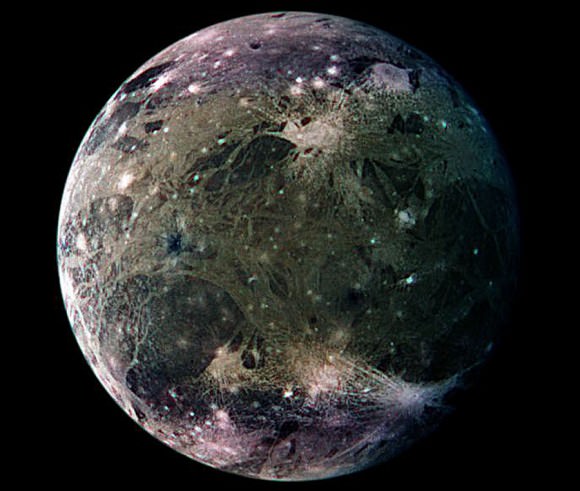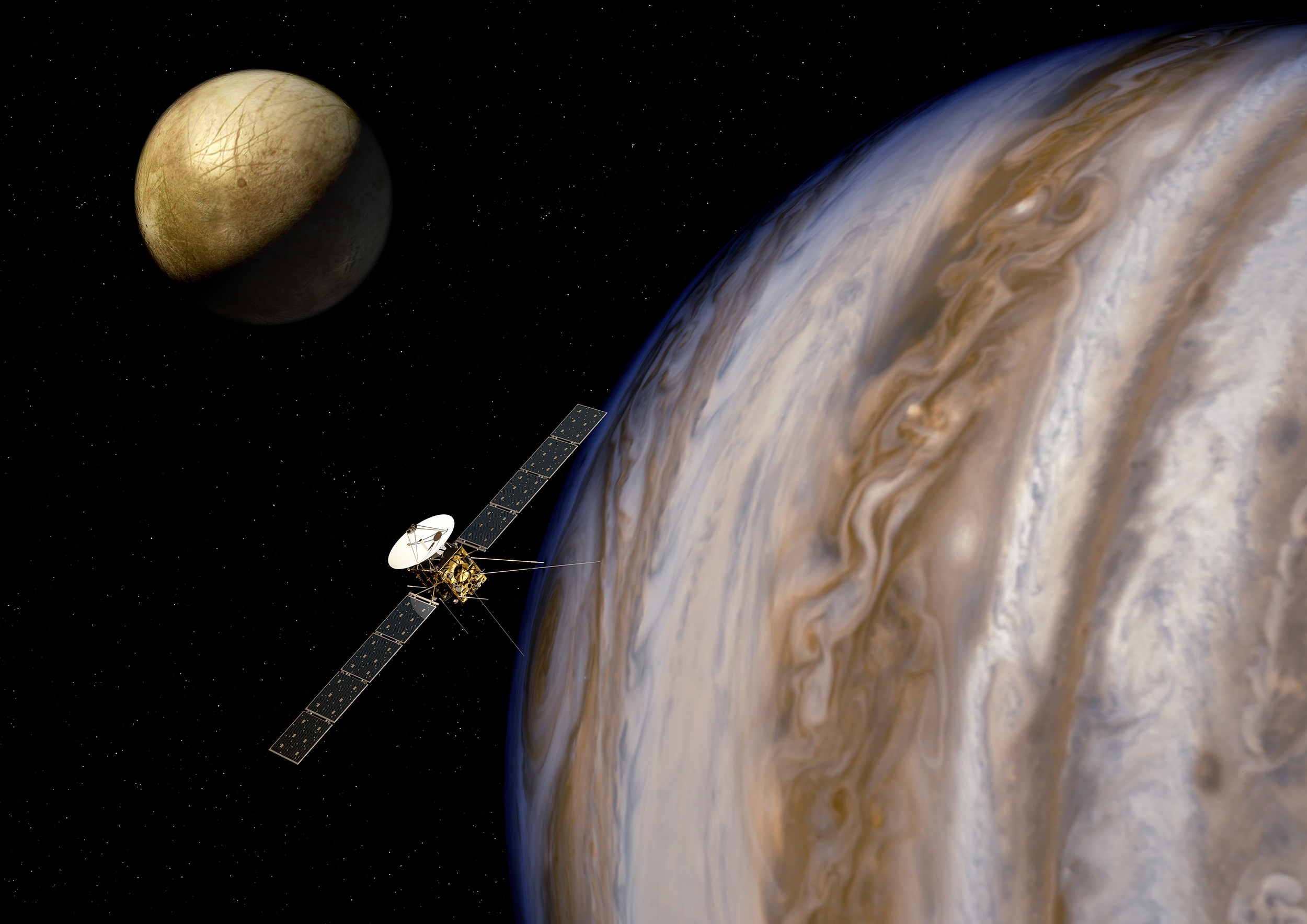It takes years of painstaking work to get a spacecraft off the ground. So when you have a spacecraft like JUICE (the Jupiter Icy Moons Explorer) set to launch in 2022, you need to back up about a decade to get things figured out. How will the spacecraft get there? What science instruments will it carry? What will the spacecraft look like and what systems will support its work?
JUICE just hit another milestone in its development a few days ago, when the European Space Agency gave the go-ahead for the “implementation phase” — the part where the spacecraft design begins to take shape. The major goal of the mission will be to better understand those moons around Jupiter that could be host to life.
The spacecraft will reach Jupiter’s system in 2030 and begin with observations of the mighty planet — the biggest in our Solar System — to learn more about the gas giant’s atmosphere, faint rings and magnetic environment. It also will be responsible for teaching us more about Europa (an icy world that could host a global ocean) and Callisto (a moon pockmarked with the most craters of anything in the Solar System.)
Its major departure from past missions, though, will come when JUICE enters orbit around Ganymede. This will the first time any spacecraft has circled an icy moon repeatedly; past views of the moon have only come through flybys by the passing-through spacecraft (such as Pioneer and Voyager) and the Galileo mission, which stuck around Jupiter’s system in the 1990s and early 2000s.

With Ganymede, another moon thought to host a global ocean, JUICE will examine its surface and insides. What makes the moon unique in our neighborhood is its ability to create its own magnetic field, which creates interesting effects when it interacts with Jupiter’s intense magnetic environment.
“Jupiter’s diverse Galilean moons – volcanic Io, icy Europa and rock-ice Ganymede and Callisto – make the Jovian system a miniature Solar System in its own right,” the European Space Agency stated when the mission was selected in 2012.
“With Europa, Ganymede and Callisto all thought to host internal oceans, the mission will study the moons as potential habitats for life, addressing two key themes of cosmic vision: what are the conditions for planet formation and the emergence of life, and how does the Solar System work?”
JUICE is one of several major spacecraft ESA plans to launch in the next couple of decades. You can read more about the other Cosmic Vision candidates at this ESA website.
Source: European Space Agency


I wonder if I’m still alive in 2030 when this thing is supposed to reach Jupiter.
8 years until launch. Another 8 years until arrival. With optimistic delays, that’s twice the Rosetta mission. It won’t ever happen! Too many political and economic changes will happen during this phantasy epoch. And it would be very primitive technology when it would arrive anyway. Philae had a 8MHz CPU! It is not seriously meant, it is just fraud with the only purpose to steal money without achieving anything at all. JUICE won’t happen.
Voyager flew by Jupiter 18 months after it was launched. Rather 10 flyby’s with modern technology, once every second year, than high-risk betting everything on only one single orbiter per human generation, arriving with then ancient technology. But the fraudsters don’t care, they eat more money for every extra year until they have to prove any kind of result. JUICE was never even meant to ever happen. 10 years from now it will suddenly be scrubbed without even having launched.
So cameras, computers, sensors etc., all become useless if you send them on a long space trip, just because we continue to design better technology here?
What a ridiculous thing to say.
The rest of your post is equally absurd, nothing but relentless pessimism without any sensible basis.
You’re an idiot.
Oh c’mon guys. Maybe he was just expressing his frustration about the apparent sluggishness of how these things proceed. And frankly, 8 years just to build the damn thing is a rather long time. 8 years to get it to Jupiter is an even longer f*cking time. At least they should have a plan B for “direct to Jupiter” route, in case we have a cheap heavy lifter available when the spacecraft is ready to go (obviously, SpaceX reusable Falcon Heavy comes to my mind here).
The guy is calling people money-grubbing frauds for no good reason. Frustration is one thing, but alleging what amounts to embezzlement is something else. Jeffrey Boerst is right on this one.
Please!
FarAway usually leaves reasonable remarks, but the pessimism in this one is a little much. New Horizons was proposed in the 1990s shortly before I retired. It was approved in ’01 and fianlly launched in ’06. It will reach Pluto next summer. I have prayed that I would live long enough to see the pictures coming back from Pluto. *I* have been patient enough to wait this probe out. I’ll be 82 next summer but the wait will have been worth it.
Stop the pessimism, Far. There is much to see and learn with even modest amounts of patience.
To see fraud in these efforts smells too much like paranoia. It must be that you’re a republican.